Baseline-Free Structural Damage Identification for Beam-Like Structures Using Curvature Waveforms of Propagating Flexural Waves
Abstract
:1. Introduction
2. Methodology
2.1. TSCDI Based on Curvature Waveforms of Propagating Flexural Waves
2.2. Local-Regression Waveforms of Pseudo-Pristine Structure, Local-Regression TSCDI and Auxiliary TSCDI
2.3. Multi-Resolution Local-Regressioon TSCDIs, Multi-Resolution Auxiliary TSCDIs and Auxiliary CDIs
- Step 1.
- Waveforms of a propagating flexural wave is measured at equally spaced discrete measurement points assigned along the length of a damaged beam-like structure;
- Step 2.
- The multi-resolution local-regression TSCDI is calculated for the waveform at each discrete t with multiple r measured in Step 1;
- Step 3.
- Step 4.
- Identify damage in neighborhoods with consistently high values with different r and those with high values obtained in Step 3.
3. Numerical Investigation
3.1. Finite Element Models of Damaged and Pristine Beams
3.2. Waveforms of Damaged, Pristine and Pseudo-Pristine Beams and Curvature Waveforms
3.3. Damage Identification Results
4. Experimental Investigation
4.1. Experimental Setup
4.2. Damage Identification Results
5. Conclusions
Author Contributions
Funding
Conflicts of Interest
References
- Fan, W.; Qiao, P. Vibration-based damage identification methods: A review and comparative study. Struct. Health Monit. 2011, 10, 83–111. [Google Scholar] [CrossRef]
- Huang, M.; Gül, M.; Zhu, H. Vibration-based structural damage identification under varying temperature effects. ASCE J. Aerosp. Eng. 2018, 31, 04018014. [Google Scholar] [CrossRef]
- Padil, K.H.; Bakhary, N.; Abdulkareem, M.; Li, J.; Hao, H. Non-probabilistic method to consider uncertainties in frequency response function for vibration-based damage detection using artificial neural network. J. Sound Vib. 2020, 467, 115069. [Google Scholar] [CrossRef]
- Avci, O.; Abdeljaber, O.; Kiranyaz, S.; Hussein, M.; Gabbouj, M.; Inman, D.J. A review of vibration-based damage detection in civil structures: From traditional methods to machine learning and deep learning applications. Mech. Syst. Signal Process. 2021, 147, 107077. [Google Scholar] [CrossRef]
- Zhu, W.; He, K. Detection of damage in space frame structures with L-shaped beams and bolted joints using changes in natural frequencies. J. Vib. Acoust. 2013, 135, 051001. [Google Scholar] [CrossRef]
- He, K.; Zhu, W. Detecting loosening of bolted connections in a pipeline using changes in natural frequencies. J. Vib. Acoust. 2014, 136, 034503. [Google Scholar] [CrossRef]
- Farrar, C.R.; Doebling, S.W.; Nix, D.A. Vibration–based structural damage identification. Philos. Trans. R. Soc. Lond. Ser. A Math. Phys. Eng. Sci. 2001, 359, 131–149. [Google Scholar] [CrossRef]
- Pandey, A.; Biswas, M.; Samman, M. Damage detection from changes in curvature mode shapes. J. Sound Vib. 1991, 145, 321–332. [Google Scholar] [CrossRef]
- Ratcliffe, C.P. A frequency and curvature based experimental method for locating damage in structures. J. Vib. Acoust. 2000, 122, 324–329. [Google Scholar] [CrossRef]
- Qiao, P.; Lu, K.; Lestari, W.; Wang, J. Curvature mode shape-based damage detection in composite laminated plates. Compos. Struct. 2007, 80, 409–428. [Google Scholar] [CrossRef]
- Yoon, M.K.; Heider, D.; Gillespie, J.W.; Ratcliffe, C.P.; Crane, R.M. Local damage detection with the global fitting method using mode shape data in notched beams. J. Nondestruct. Eval. 2009, 28, 63–74. [Google Scholar] [CrossRef]
- Rucka, M.; Wilde, K. Application of continuous wavelet transform in vibration based damage detection method for beams and plates. J. Sound Vib. 2006, 297, 536–550. [Google Scholar] [CrossRef]
- Xu, W.; Radzieński, M.; Ostachowicz, W.; Cao, M. Damage detection in plates using two-dimensional directional Gaussian wavelets and laser scanned operating deflection shapes. Struct. Health Monit. 2013, 12, 457–468. [Google Scholar] [CrossRef]
- Solís, M.; Algaba, M.; Galvín, P. Continuous wavelet analysis of mode shapes differences for damage detection. Mech. Syst. Signal Process. 2013, 40, 645–666. [Google Scholar] [CrossRef]
- Cao, M.; Xu, W.; Ostachowicz, W.; Su, Z. Damage identification for beams in noisy conditions based on Teager energy operator-wavelet transform modal curvature. J. Sound Vib. 2014, 333, 1543–1553. [Google Scholar] [CrossRef]
- Xu, W.; Ding, K.; Liu, J.; Cao, M.; Radzieński, M.; Ostachowicz, W. Non-uniform crack identification in plate-like structures using wavelet 2D modal curvature under noisy conditions. Mech. Syst. Signal Process. 2019, 126, 469–489. [Google Scholar] [CrossRef]
- Xu, Y.; Zhu, W.; Liu, J.; Shao, Y. Identification of embedded horizontal cracks in beams using measured mode shapes. J. Sound Vib. 2014, 333, 6273–6294. [Google Scholar] [CrossRef]
- Xu, Y.; Zhu, W. Non-model-based damage identification of plates using measured mode shapes. Struct. Health Monit. 2017, 16, 3–23. [Google Scholar] [CrossRef]
- Su, Z.; Ye, L.; Lu, Y. Guided Lamb waves for identification of damage in composite structures: A review. J. Sound Vib. 2006, 295, 753–780. [Google Scholar] [CrossRef]
- Park, H.W.; Kim, S.B.; Sohn, H. Understanding a time reversal process in Lamb wave propagation. Wave Motion 2009, 46, 451–467. [Google Scholar] [CrossRef]
- Mitra, M.; Gopalakrishnan, S. Guided wave based structural health monitoring: A review. Smart Mater. Struct. 2016, 25, 053001. [Google Scholar] [CrossRef]
- Ma, Z.; Yu, L. Lamb wave imaging with actuator network for damage quantificationin aluminum plate structures. J. Intell. Mater. Syst. Struct. 2021, 32, 182–195. [Google Scholar] [CrossRef]
- Ruzzene, M.; Jeong, S.; Michaels, T.; Michaels, J.; Mi, B. Simulation and measurement of ultrasonic waves in elastic plates using laser vibrometry. In AIP Conference Proceedings; American Institute of Physics: College Park, MD, USA, 2005; Volume 760, pp. 172–179. [Google Scholar]
- Sohn, H.; Dutta, D.; Yang, J.Y.; Park, H.J.; DeSimio, M.; Olson, S.; Swenson, E. Delamination detection in composites through guided wave field image processing. Compos. Sci. Technol. 2011, 71, 1250–1256. [Google Scholar] [CrossRef]
- Rogge, M.D.; Leckey, C.A. Characterization of impact damage in composite laminates using guided wavefield imaging and local wavenumber domain analysis. Ultrasonics 2013, 53, 1217–1226. [Google Scholar] [CrossRef]
- Tian, Z.; Yu, L. Lamb wave frequency–wavenumber analysis and decomposition. J. Intell. Mater. Syst. Struct. 2014, 25, 1107–1123. [Google Scholar] [CrossRef]
- Harb, M.; Yuan, F.G. Impact damage imaging using non-contact ACT/LDV system. Struct. Health Monit. 2015 2015. [Google Scholar] [CrossRef]
- He, J.; Yuan, F.G. Damage identification for composite structures using a cross-correlation reverse-time migration technique. Struct. Health Monit. 2015, 14, 558–570. [Google Scholar] [CrossRef]
- He, J.; Yuan, F.G. Lamb-wave-based two-dimensional areal scan damage imaging using reverse-time migration with a normalized zero-lag cross-correlation imaging condition. Struct. Health Monit. 2017, 16, 444–457. [Google Scholar] [CrossRef]
- Beer, F.P. Statics and Mechanics of Materials; The McGraw-Hill Companies, Inc.: New York, NY, USA, 2011. [Google Scholar]
- Cox, I.; Gaudard, M. Discovering Partial Least Squares with JMP; SAS Institute: Rockville, MD, USA, 2013. [Google Scholar]
- Kincaid, D.; Kincaid, D.R.; Cheney, E.W. Numerical Analysis: Mathematics of Scientific Computing; American Mathematical Soc.: Providence, RI, USA, 2009; Volume 2. [Google Scholar]
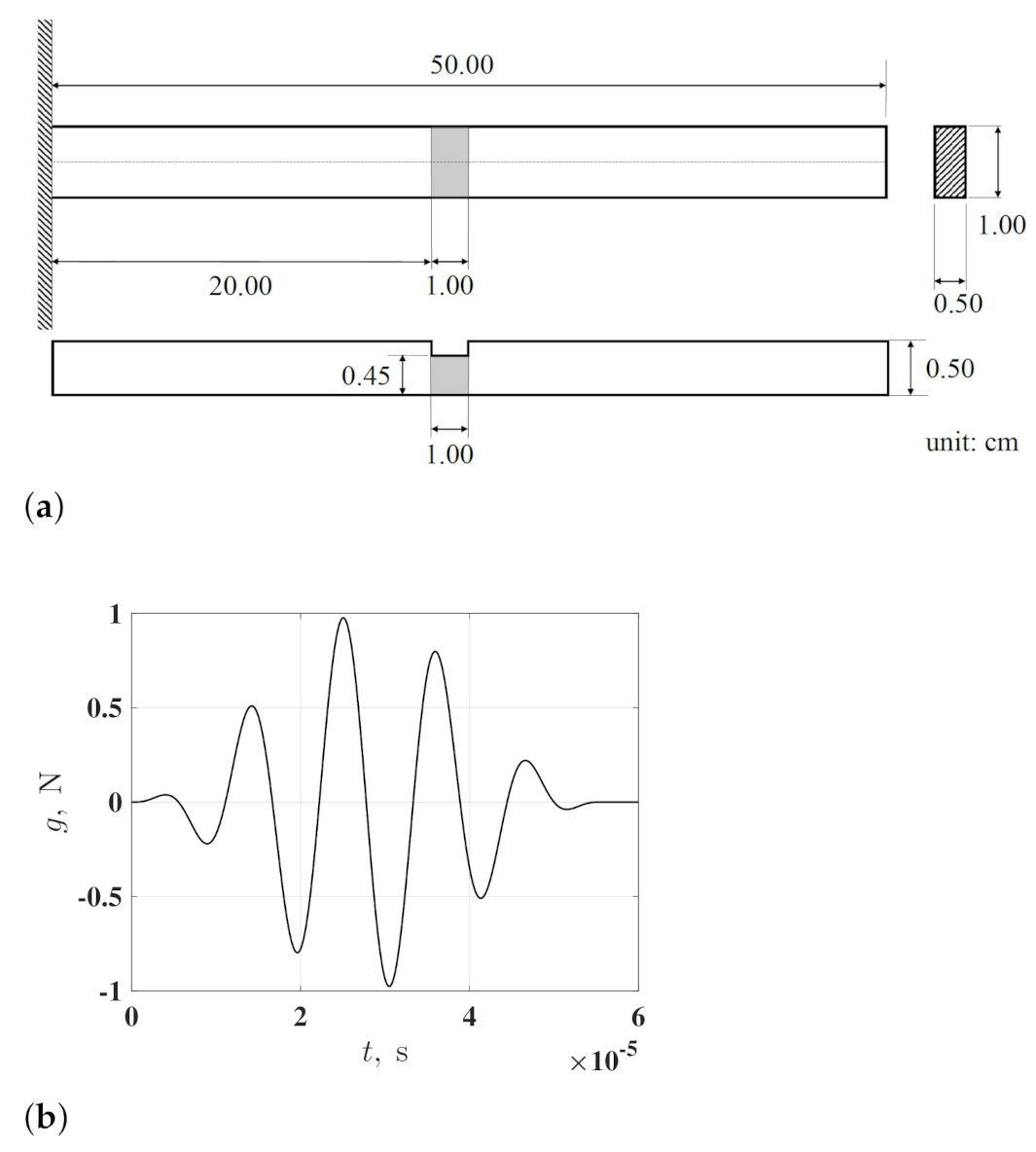
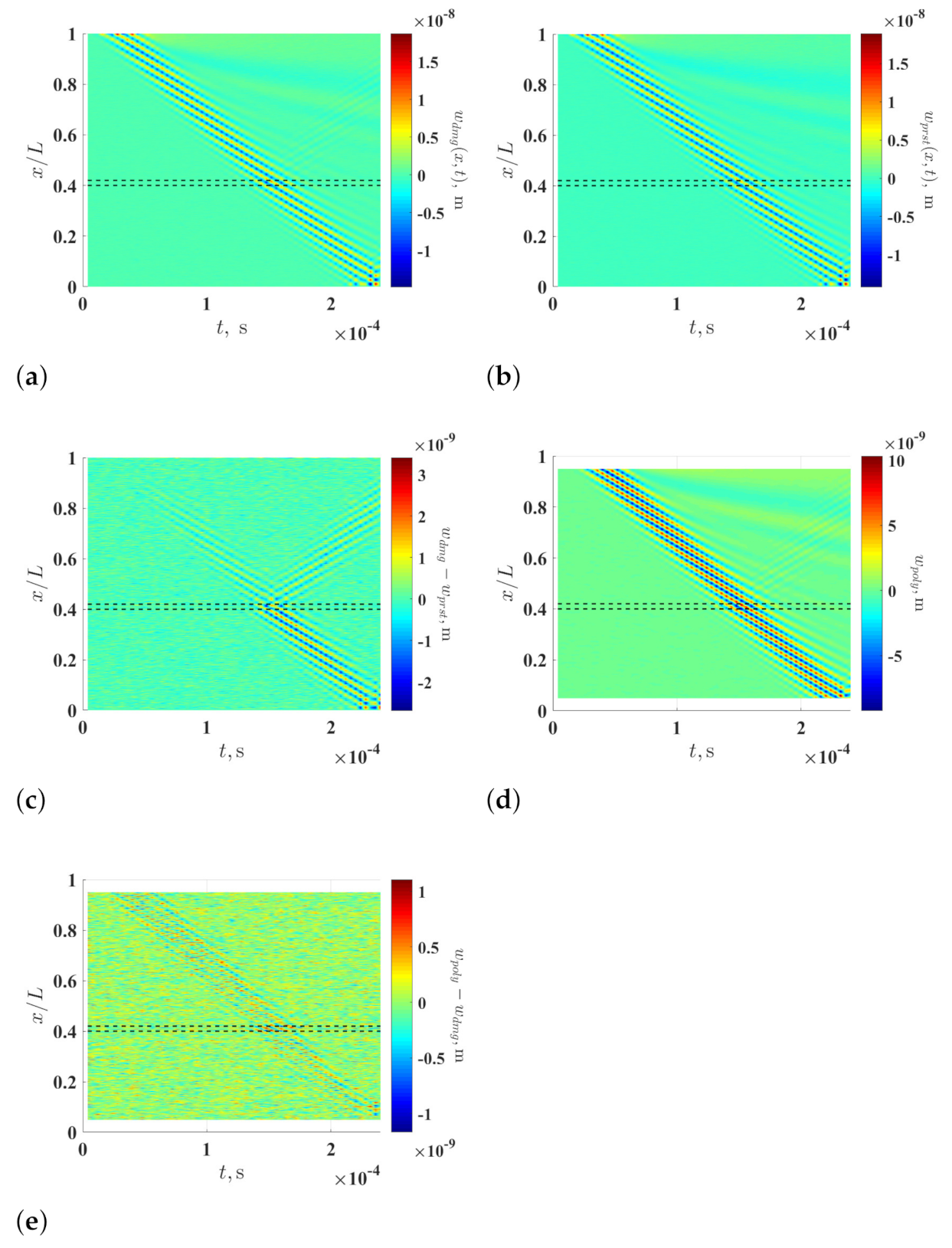

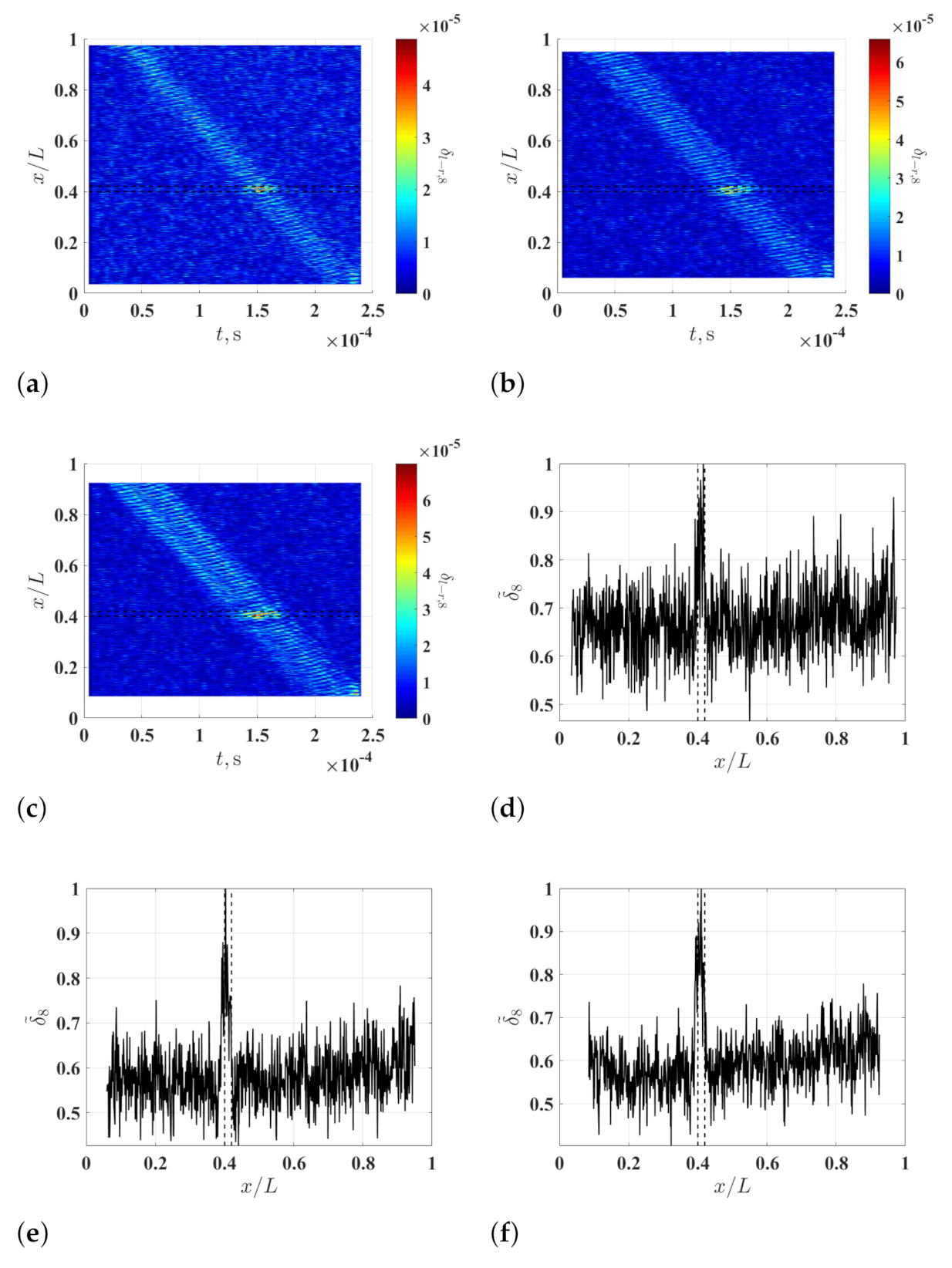

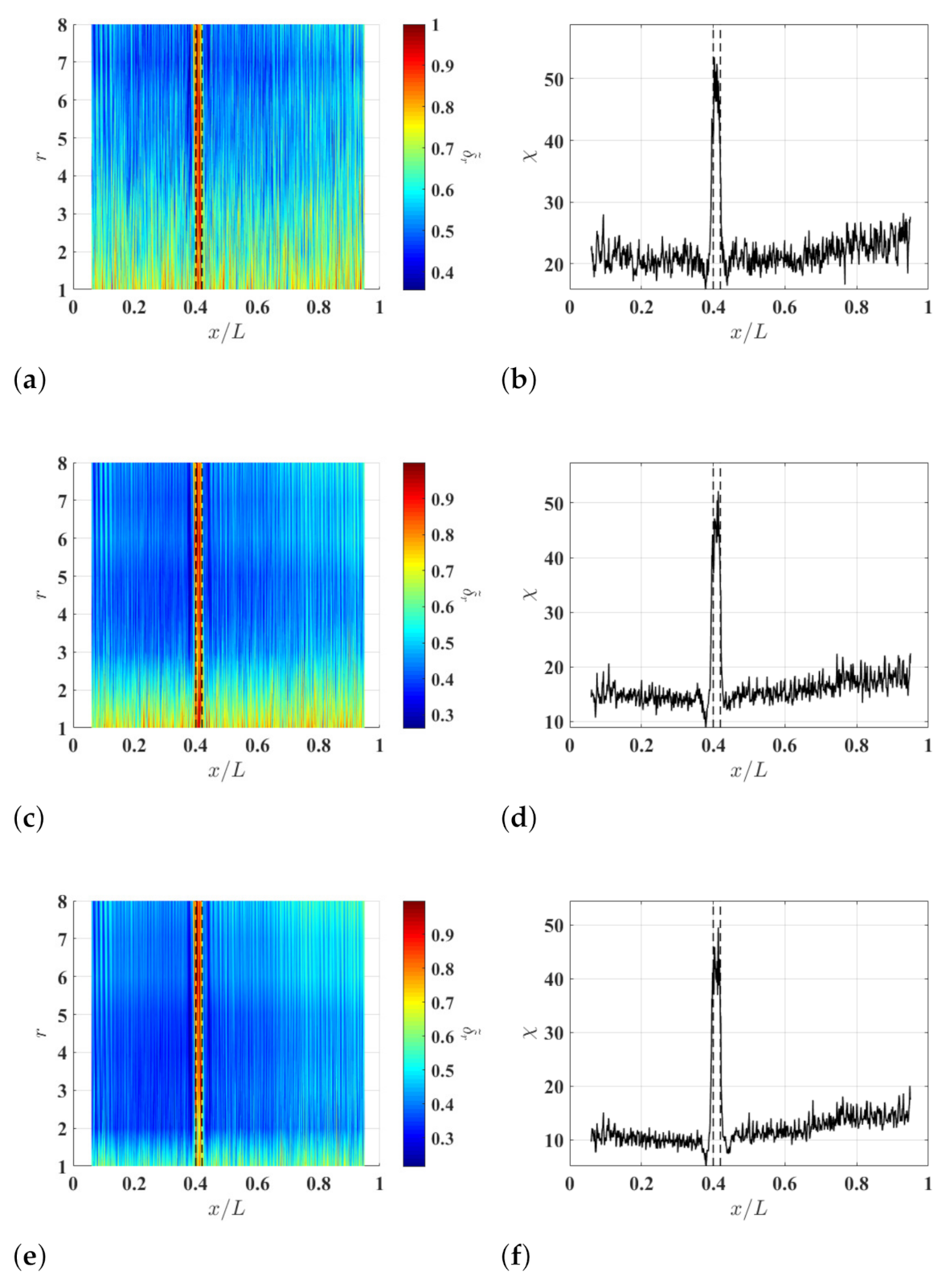
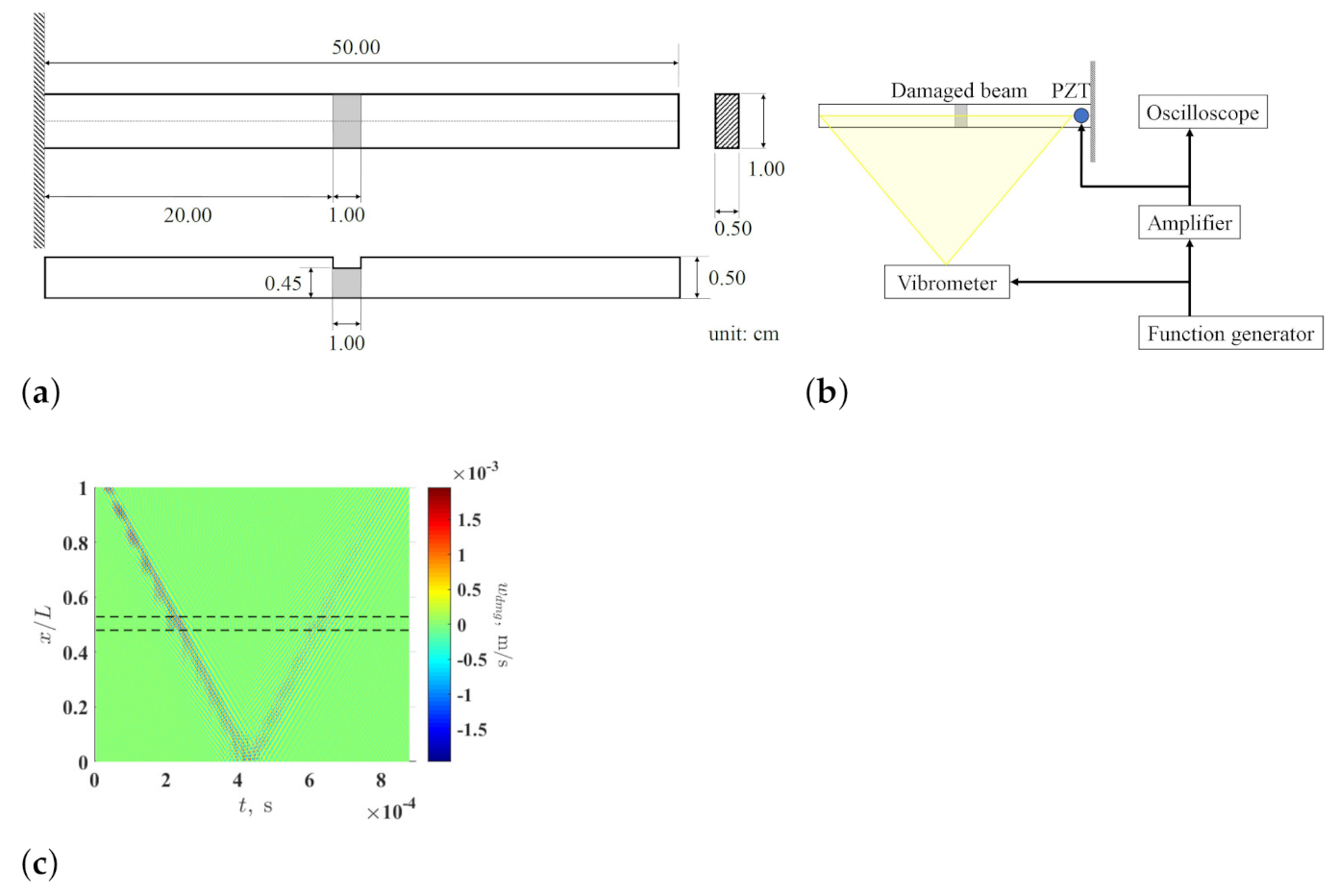
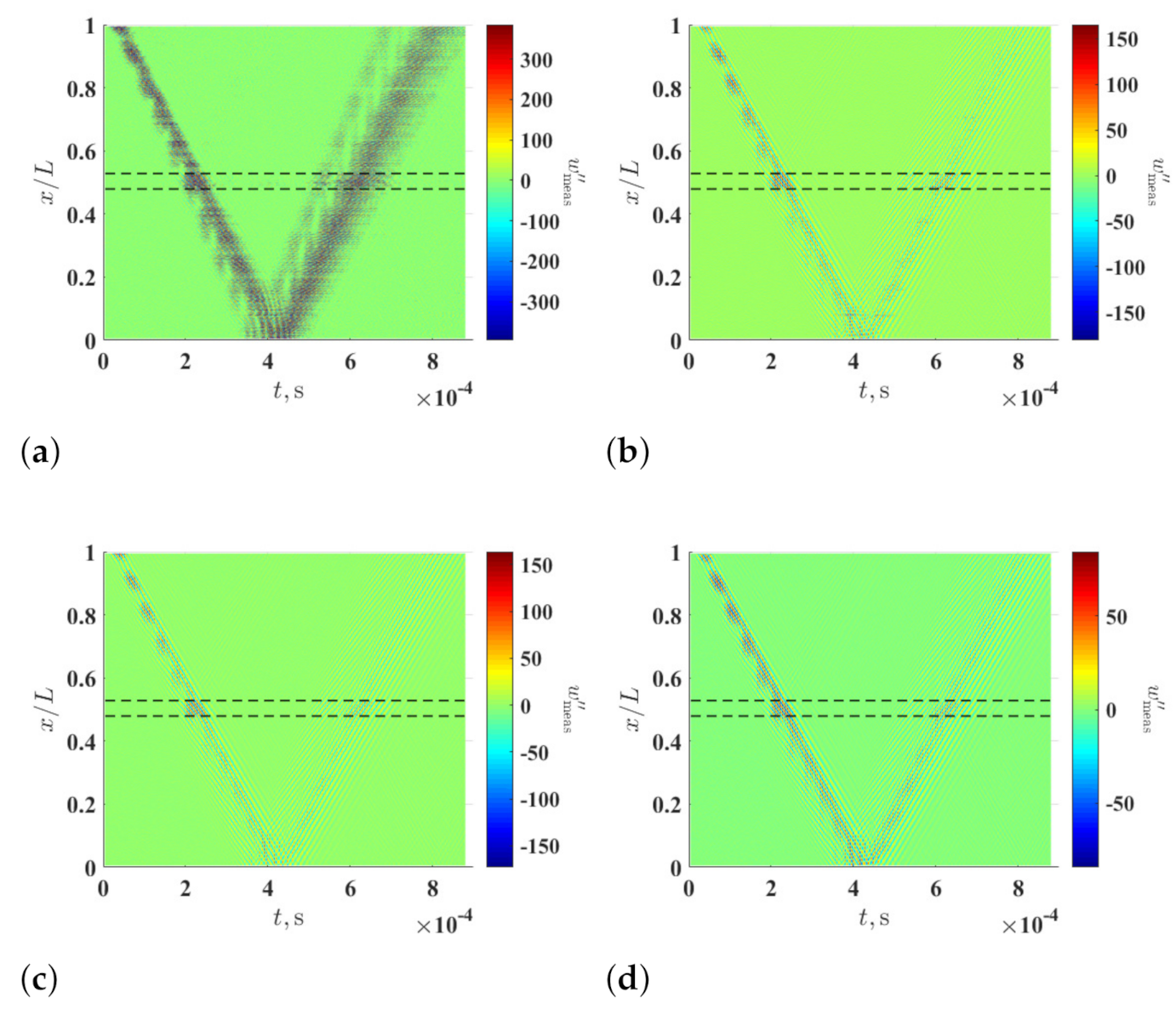


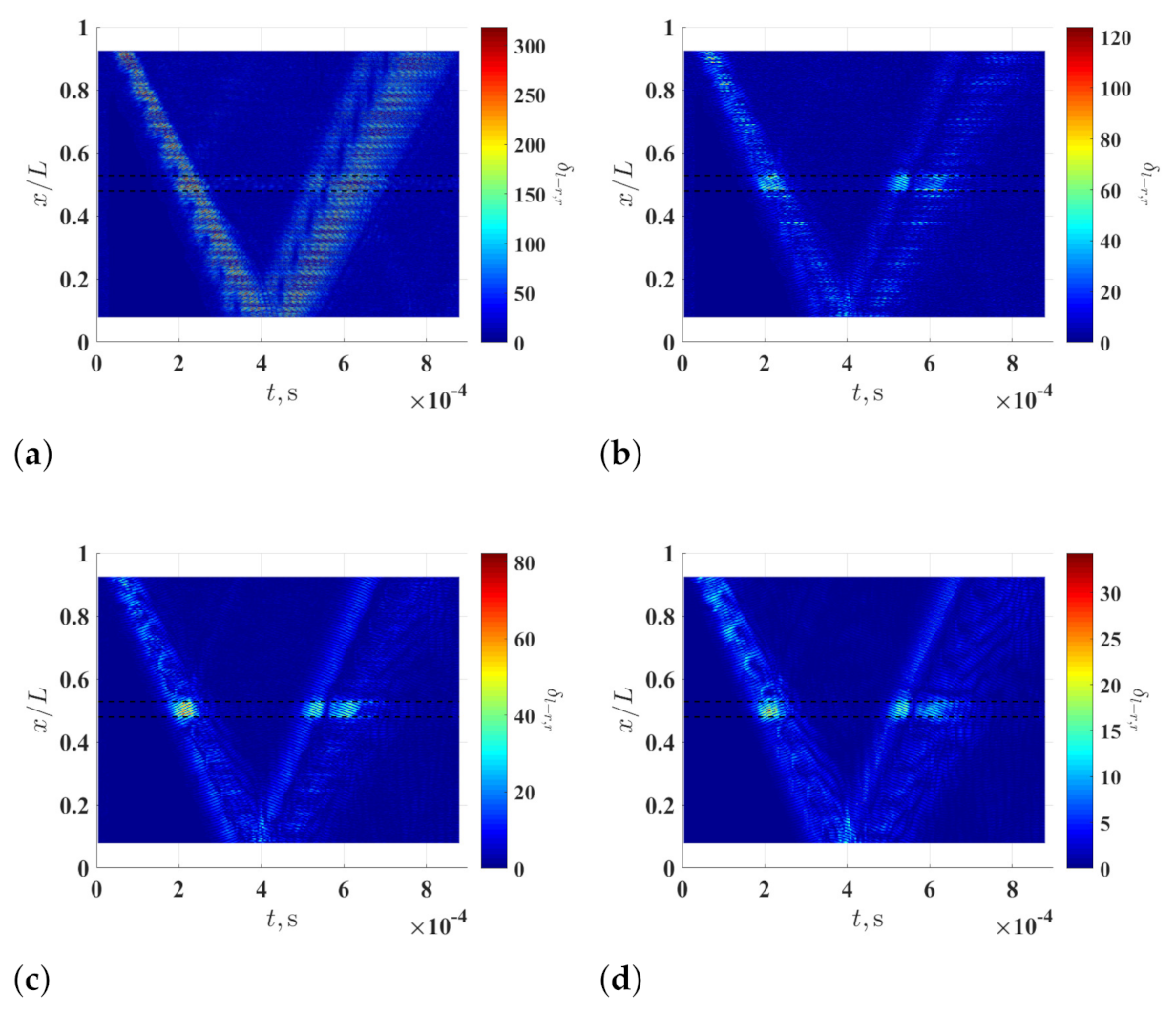


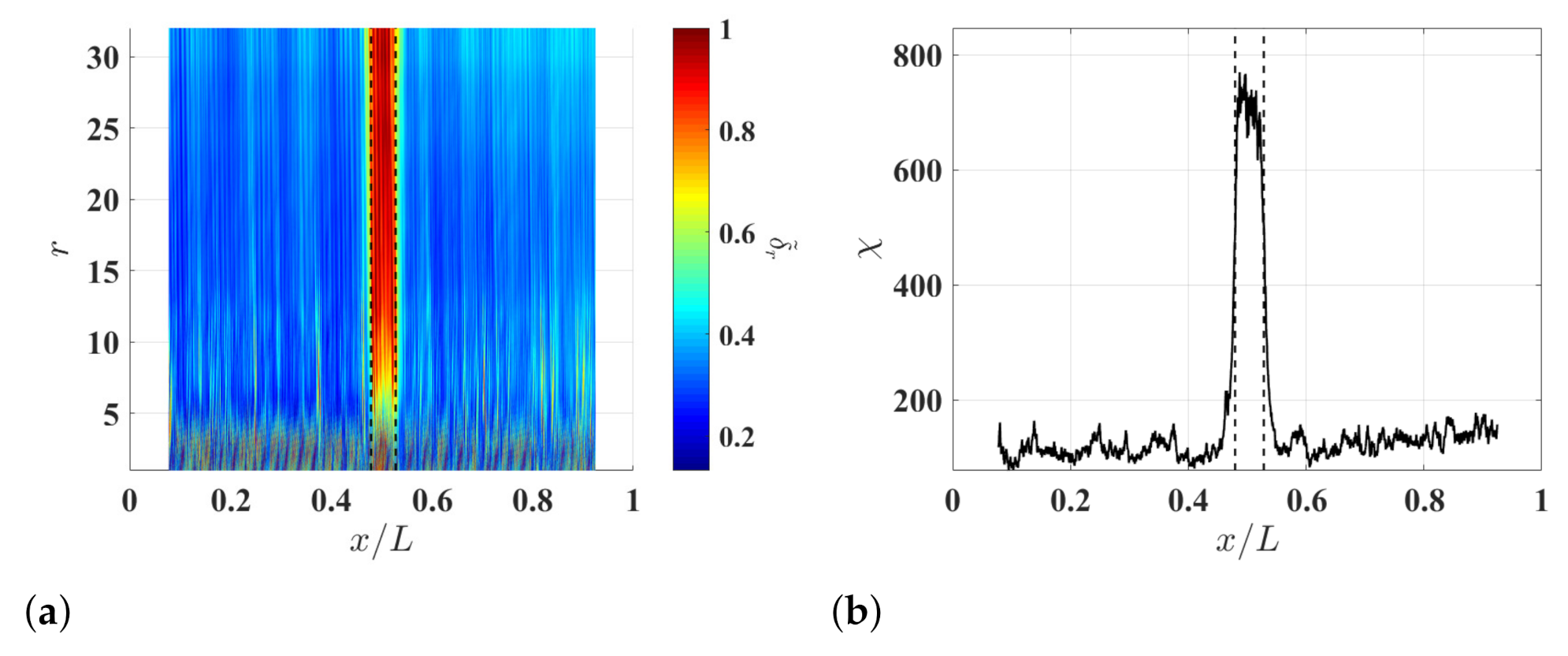
Publisher’s Note: MDPI stays neutral with regard to jurisdictional claims in published maps and institutional affiliations. |
© 2021 by the authors. Licensee MDPI, Basel, Switzerland. This article is an open access article distributed under the terms and conditions of the Creative Commons Attribution (CC BY) license (https://creativecommons.org/licenses/by/4.0/).
Share and Cite
Xu, Y.F.; Kim, J.S. Baseline-Free Structural Damage Identification for Beam-Like Structures Using Curvature Waveforms of Propagating Flexural Waves. Sensors 2021, 21, 2453. https://doi.org/10.3390/s21072453
Xu YF, Kim JS. Baseline-Free Structural Damage Identification for Beam-Like Structures Using Curvature Waveforms of Propagating Flexural Waves. Sensors. 2021; 21(7):2453. https://doi.org/10.3390/s21072453
Chicago/Turabian StyleXu, Y. F., and J. S. Kim. 2021. "Baseline-Free Structural Damage Identification for Beam-Like Structures Using Curvature Waveforms of Propagating Flexural Waves" Sensors 21, no. 7: 2453. https://doi.org/10.3390/s21072453
APA StyleXu, Y. F., & Kim, J. S. (2021). Baseline-Free Structural Damage Identification for Beam-Like Structures Using Curvature Waveforms of Propagating Flexural Waves. Sensors, 21(7), 2453. https://doi.org/10.3390/s21072453




